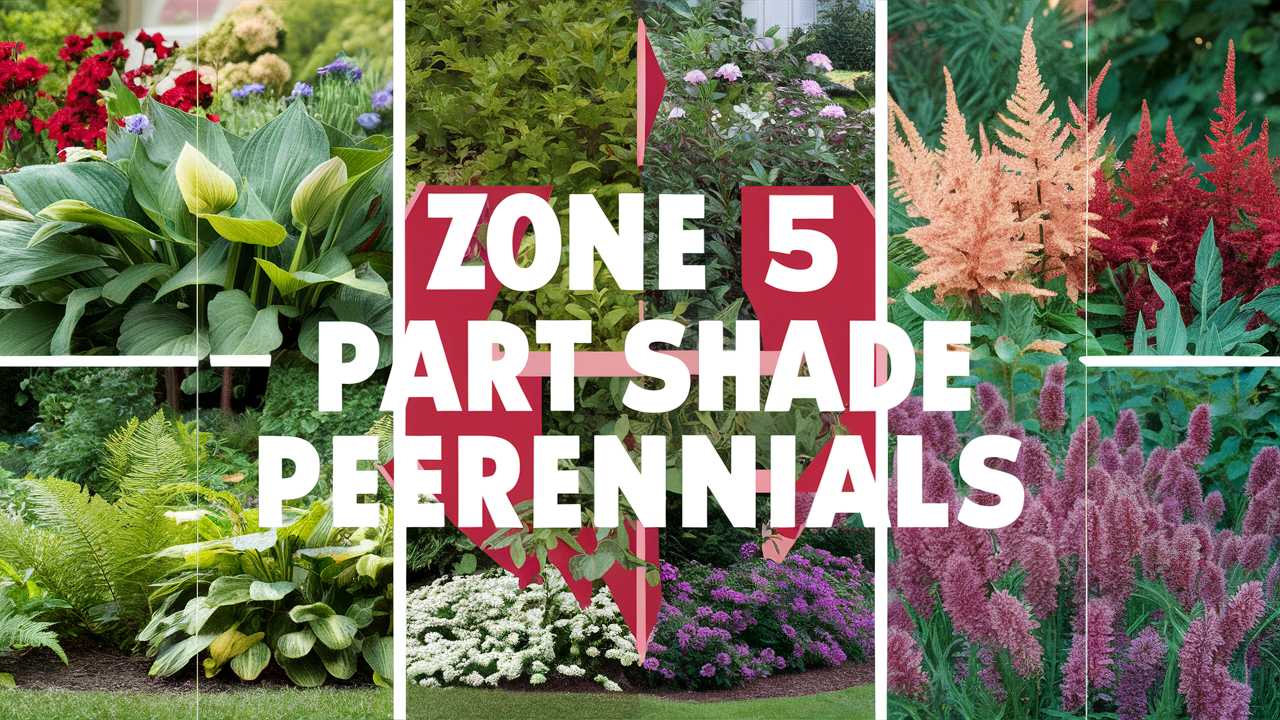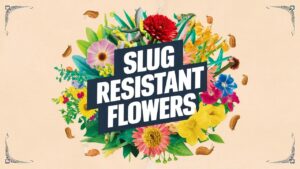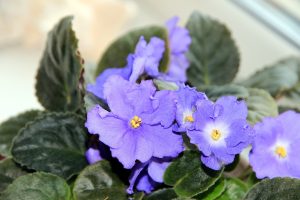In this post, we’ll explore a variety of stunning perennials that flourish in Zone 5 in part shade conditions.
Astilbe

Astilbe is not just a perennial; it’s a showstopper in any part shade garden. With its feathery plumes of flowers in shades of pink, white, and purple, astilbe adds an ethereal quality to the landscape. It prefers moist, well-draining soil and can tolerate dappled sunlight. This makes it perfect for planting alongside streams, ponds, or in areas that receive morning sun and afternoon shade. Besides its visual appeal, astilbe is also an attractive option for cutting gardens, as its blooms hold well in floral arrangements.
Barrenwort
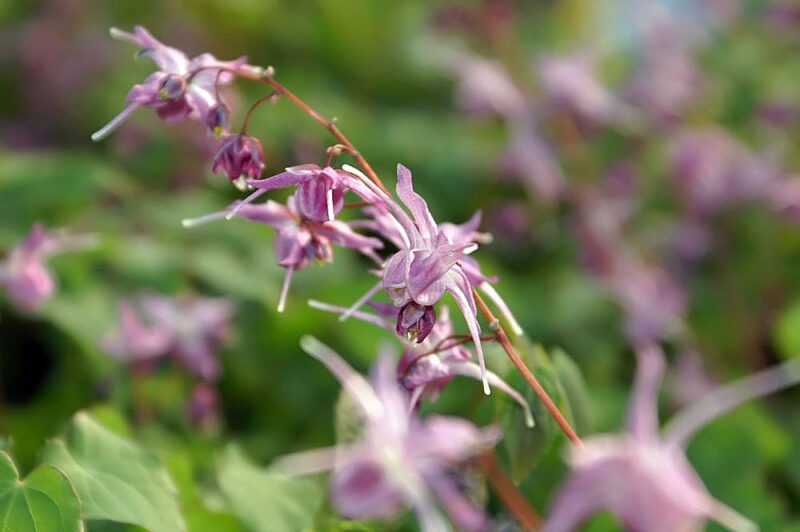
Also known as Epimedium, barrenwort is an excellent ground cover that thrives in part shade. It features heart-shaped leaves that can turn vibrant hues in the fall, making it a year-round visual treat. Barrenwort is drought-tolerant once established, which is a plus for busy gardeners. Its delicate flowers appear in spring, resembling tiny, fluttering butterflies. Use barrenwort to fill in spaces between taller plants, allowing its low growth to create a beautiful and textured garden floor.
Boston Ivy
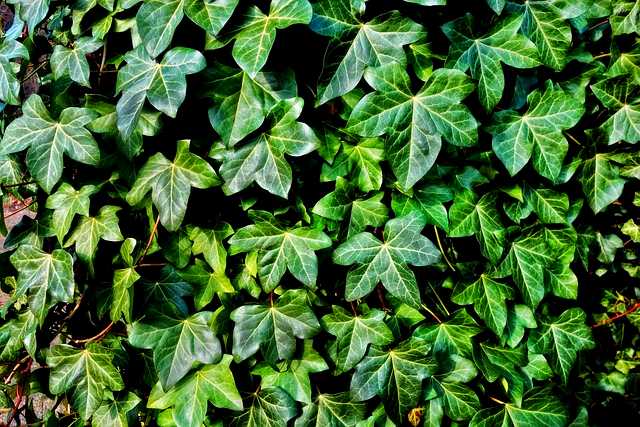
Boston Ivy is a perfect choice for vertical gardening in Zone 5’s part shade. This vigorous climber can transform walls, trellises, and fences into living art. Its glossy, green leaves provide a vivid backdrop in the summer, while the fall brings a breathtaking display of reds and oranges. Unlike many climbing plants, Boston Ivy clings naturally using small tendrils, making it easy to grow with minimal support. Just be cautious about where you plant it; its vigorous nature can lead to unwanted spread if not managed properly.
Bleeding Heart
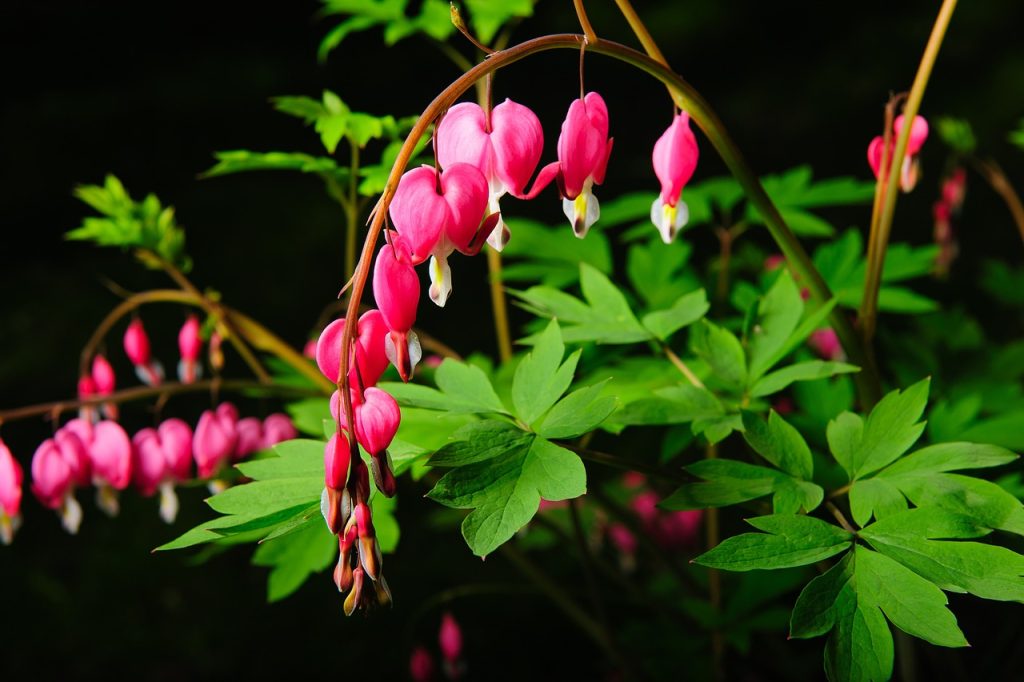
The name “bleeding heart” comes from the plant’s unique heart-shaped flowers that dangle elegantly from arching stems. This perennial is a hallmark of spring gardens, with blossoms coming in shades of pink and white. Bleeding hearts thrive in partial shade, preferring cooler, moist conditions that mimic their native woodland habitat. They are perfect for planting under trees or between shrubs, offering a burst of color without overwhelming the space. This plant often holds special meaning for gardeners, reminding them of cherished memories and the delicate nature of life itself.
Bush Honeysuckle
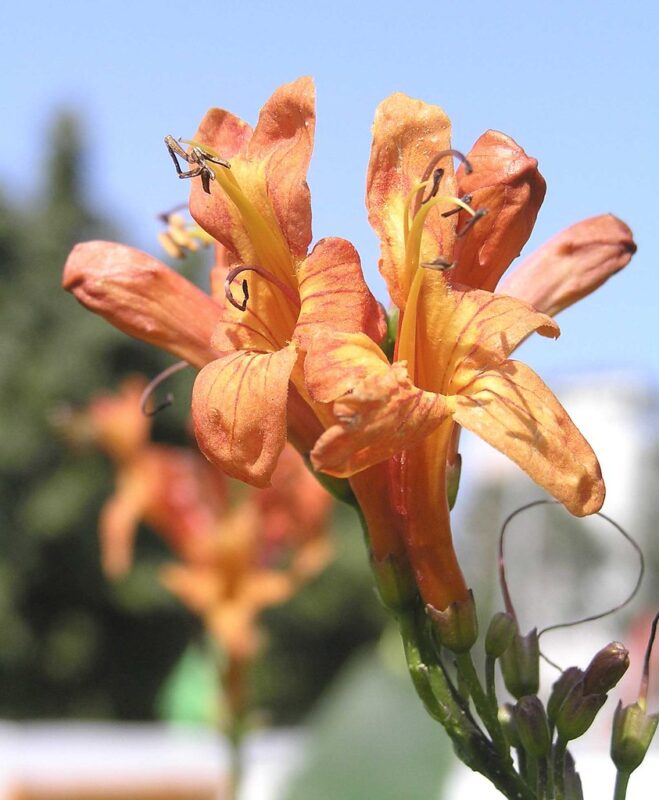
Bush honeysuckle, known for its delightful fragrance, is a perennial shrub that flourishes in part shade. It’s a versatile addition to gardens, with easy-to-maintain traits and vibrant, tubular flowers that attract hummingbirds and butterflies. The bright green leaves provide a lush backdrop while the blooms typically occur in late spring to early summer. These plants can also grow as a hedge, creating privacy while infusing your garden with natural beauty. Just be aware that some varieties can be invasive, so choose wisely and consider non-invasive options.
Climbing Hydrangea
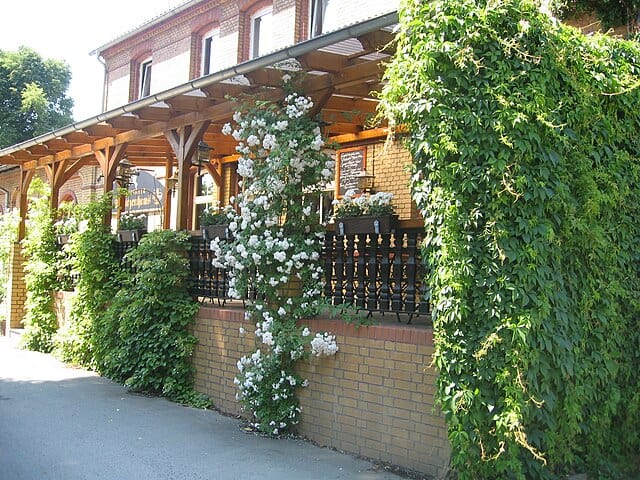
If you’re looking for a climbing plant that loves part shade, the climbing hydrangea is your answer. Its creamy white flowers, which bloom in late spring, are a source of joy and aesthetic appeal. They can climb up fences, walls, and trees, often creating a stunning cascading effect. Climbing hydrangeas enjoy their space, so allow them room to grow without being cramped by other plants. The heart-shaped leaves are beautiful in their own right, turning a rich yellow in the fall. This plant is perfect for gardeners looking for beauty and grace in a shaded area.
Columbine
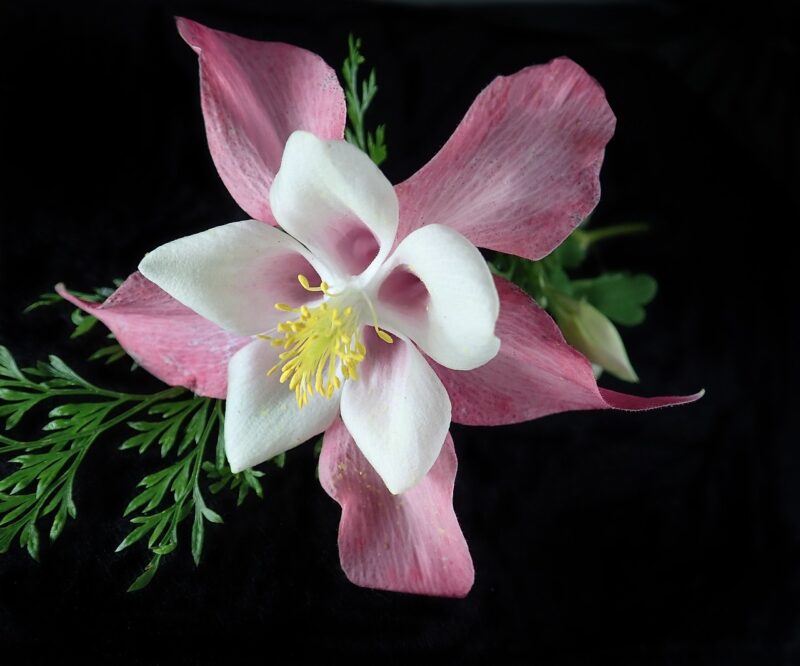
Columbines are charming perennials that offer whimsical, unique flower shapes and vibrant colors all while thriving in part shade. They are particularly attractive to hummingbirds and bees, making them beneficial for any wildlife garden. The delicate, nodding flowers can come in various hues, including blues, pinks, and yellows. Plant columbines in groups to create a more substantial visual impact. They also self-seed readily, meaning you might get surprises popping up in unexpected places the following year.
Coral Bells
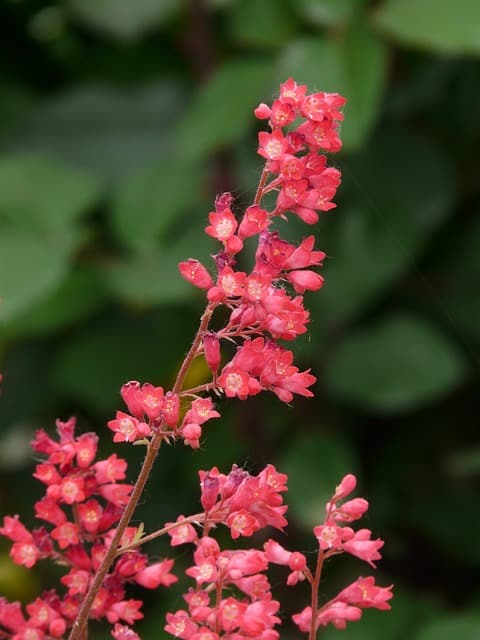
Heuchera, commonly known as coral bells, is known for its lush foliage and delicate flowers. The leaves are a tapestry of colors, ranging from deep purples to vibrant greens. These perennials flower spikes offer a lovely contrast to their foliage. Coral bells prefer rich, well-drained soil, and their versatility makes them excellent for filling spaces in shaded areas. They can also add texture and visual interest when planted alongside other perennials, creating an engaging garden composition.
Creeping Myrtle
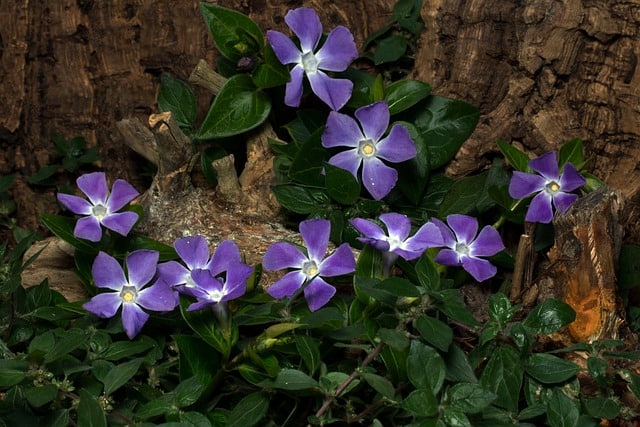
Creeping myrtle, or Vinca minor, is a well-loved ground cover that does well in part shade. Its glossy leaves provide an appealing backdrop for its star-shaped purple flowers in spring. This resilient plant is excellent for suppressing weeds, making it a gardener’s favorite. Moreover, creeping myrtle is low-maintenance and thrives in various soil types, though it prefers fertile, well-drained soil. This plant can spread quickly, making it perfect for filling gaps in shady spots while keeping the garden looking tidy and vibrant.
Dutchman’s Breeches
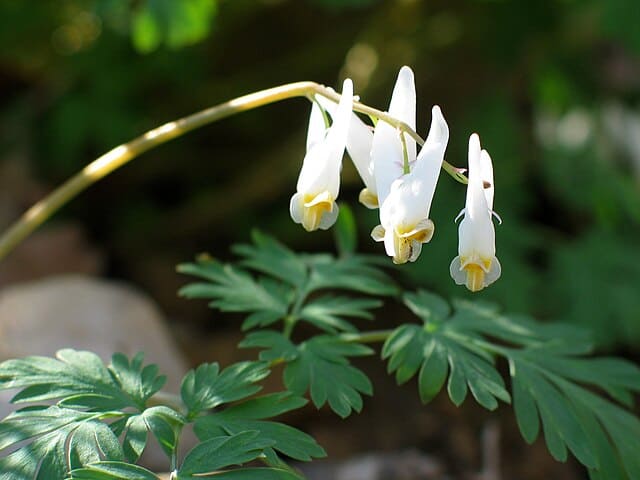
Dutchman’s breeches are whimsical perennials that thrive in part shade, particularly in woodland settings. With their unique, pant-shaped white flowers resembling little breeches, these plants provide a delightful and intriguing touch to any garden. They bloom in early spring, adding freshness to the landscape. Dutchman’s breeches prefer moist, well-drained soil and are fantastic for naturalizing in woodland gardens or along shaded paths. Their delicate nature and fascinating structure create a conversation starter among visitors.
Foxglove
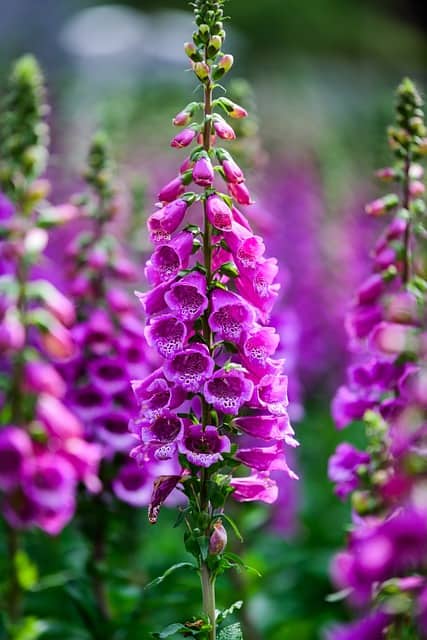
Foxglove is a dramatic perennial that adds vertical height and striking beauty to part shade gardens. Its tall spikes of tubular flowers bloom in a spectrum of colors, from purples to whites, attracting not only the eye but also bees and hummingbirds. Foxglove thrives in well-drained soil and partial shade, making it suitable for borders or the back of a shady flower bed. However, it’s essential to note that all parts of this plant are toxic if ingested, so plant responsibly and keep an eye on curious pets and children.
Hosta
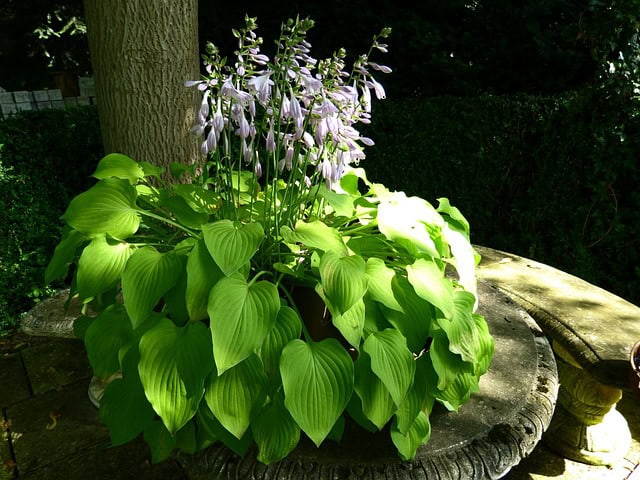
Hostas are the quintessential shade perennial, beloved for their stunning foliage which comes in various sizes, colors, and textures. From the broad, waxy leaves of large varieties like ‘Sum and Substance’ to the delicate, finely-textured leaves of smaller types like ‘Mouse Ear,’ hostas are incredibly diverse. Their flowers, which appear in mid-summer, add another layer of beauty as they rise above the leaves. Plant hostas in groups for a fuller look, and they will thrive in well-drained soil, appreciating the cool, moist conditions found in shaded areas.
Lenten Rose
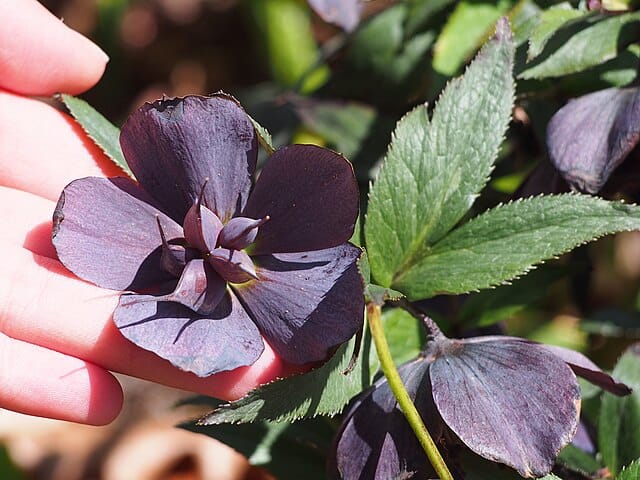
Lenten rose, or Helleborus, is among the earliest bloomers in the garden, often gracing the landscape with its presence as winter fades. Its unique, cup-shaped flowers come in varying colors, often with speckled or marbled appearances. Lenten rose thrives in part shade, preferring rich, well-drained soil. This perennial’s evergreen foliage adds interest even in the winter, making it a year-round feature in the garden. Utilize it in shaded borders or woodland gardens for a stunning display that heralds the coming spring.
Lily of the Valley
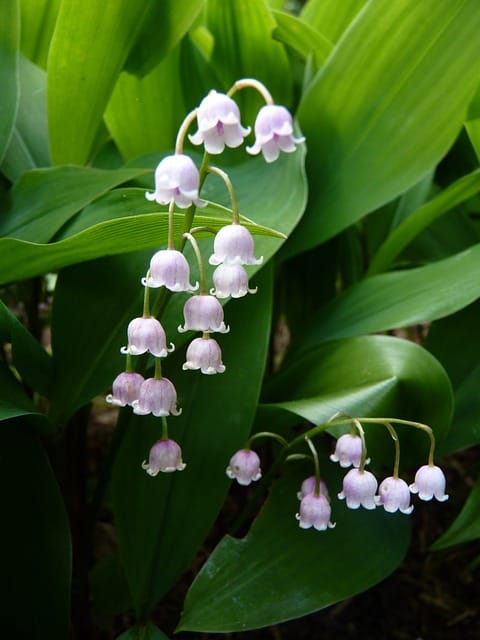
Lily of the Valley is beloved for its enchanting bells, which release a sweet fragrance, making it a favorite in shaded gardens. This perennial is incredibly hardy and spreads easily, making it perfect for naturalizing areas under trees or shrubs. Its lush green foliage adds a beautiful backdrop, while the delicate white flowers make an impact in early spring. Remember that while lovely, this plant is also toxic if ingested, so place it carefully in spaces where children and pets won’t be tempted.
Lungwort

Lungwort, or Pulmonaria, is an excellent choice for part shade owing to its attractive foliage and charming flowers. This perennial features spotted leaves that can be green or bluish, combined with clusters of bell-shaped flowers that bloom in spring, typically in shades of blue, pink, or white. Lungwort thrives in moist, rich soil, making it an excellent companion for other shade-loving plants. Its ability to spread through rhizomes means it can effectively fill space while providing a lush carpet of foliage.
Monkshood
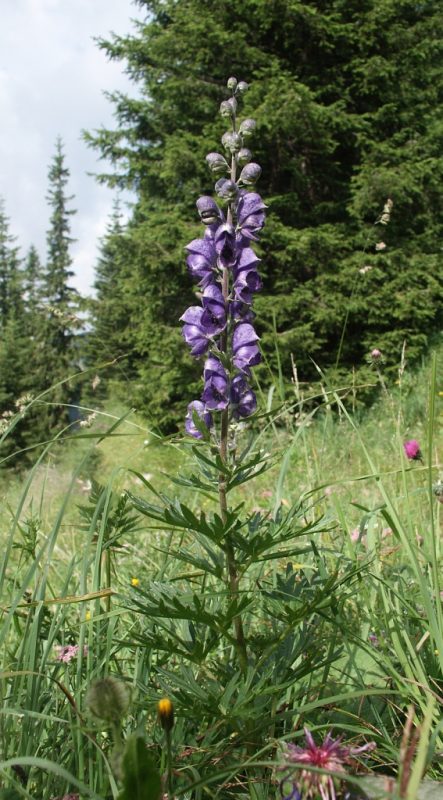
Monkshood is a statuesque perennial that offers striking blue and purple flowers that resemble hooded monks’ attire. It thrives in part shade, preferring moist, well-drained soil, often found in woodland gardens or near water features. While its beauty is captivating, gardener should also be aware of its toxicity, as all parts of the plant can be harmful if ingested. Monkshood can bring dramatic verticality to a garden, especially when paired with other shade-loving plants for a stunning effect.
Japanese Pachysandra
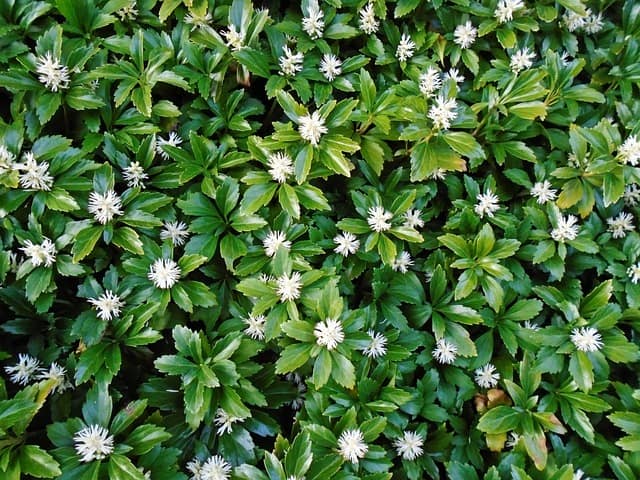
Japanese pachysandra is a wonderful evergreen ground cover that shines in shaded areas. Its glossy green leaves create a lush carpet, ideal for preventing weeds while adding texture to the garden floor. This plant is excellent for areas with poor soil under trees or in deeply shaded spots where other plants might struggle. Japanese pachysandra is low-maintenance and can tolerate drought once established. Its modest white flowers in the spring add an extra touch of charm, making it restorative and beautiful in equal measure.
Rodgers Flower
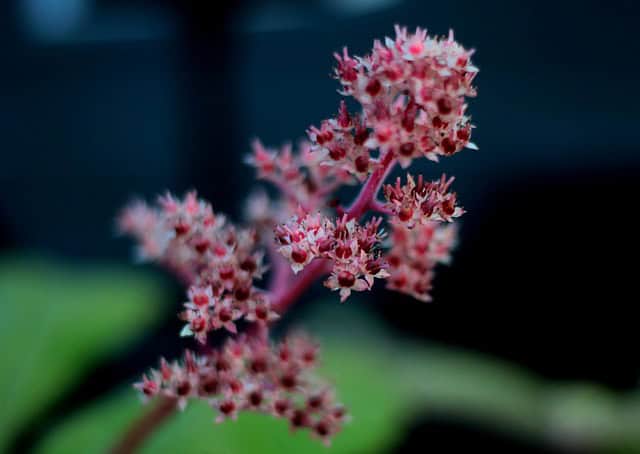
Rodgers flower, or Rodgersia, is an impressive perennial that brings drama to part shade areas with its large, decorative leaves. The foliage can reach impressive sizes, offering bold textures complemented by delicate flower spikes in the summer. This perennial prefers rich, humid environments, making it ideal for moisture-retentive sites. Rodgers flower can serve as a phenomenal specimen plant amidst other perennials or as part of a more extensive mixed border, providing a lush and inviting landscape.
Trillium
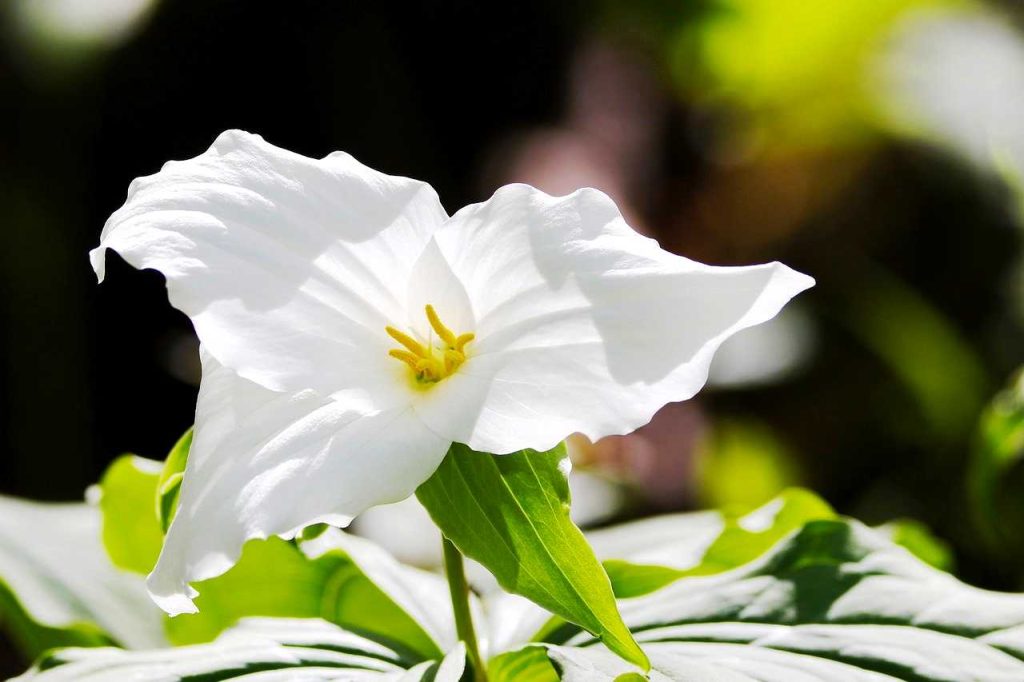
Trillium is a stunning native perennial that thrives in the cool, shaded underbrush of woods. With its iconic three-petaled flowers, trilliums present a captivating sight in spring. They come in several colors, including white, pink, and red, contributing a soft yet striking element to woodland gardens. Trillium prefers well-drained, rich soil and does best when allowed to form colonies in areas where they won’t be disturbed. Plant these beauties carefully, considering their slow growth and the fact that they are sometimes hard to find in nurseries due to their conservation status.
Toad Lily
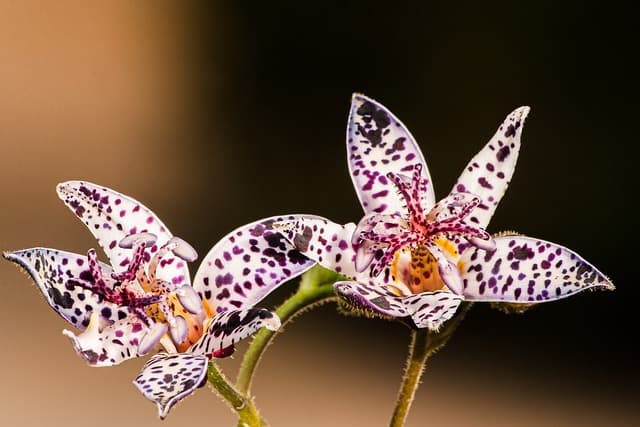
Toad lily is one of those delightful surprises you’ll want to include in your part shade garden. With its unique orchid-like flowers, often spotted and flecked, toad lily is a captivating choice for fall blooms when many other plants are winding down. These perennials thrive in well-drained, rich soil and produce flowers that are particularly attractive to pollinators. Perfect for adding variety in texture and height, toad lilies will bring an enchanting quality to your shaded garden space.
Witch Alder
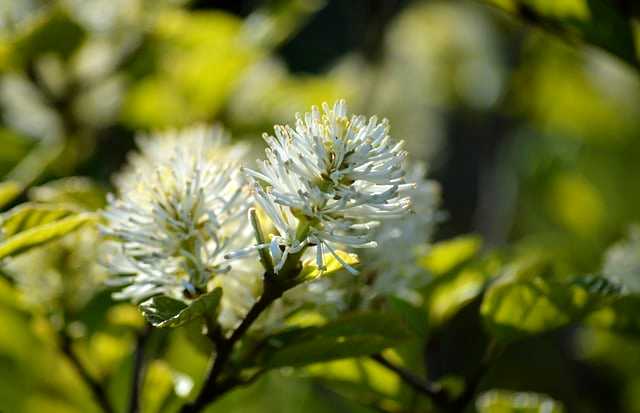
Witch alder, or Fothergilla, is a lovely deciduous shrub that combines floral beauty with stunning autumn foliage. In the spring, it offers charming bottlebrush-like flowers that contribute delightful fragrance and texture to the garden. These plants prefer moist, acidic soils and can thrive in partial shade. As fall approaches, the leaves turn vibrant shades of yellow, orange, and red, allowing your garden to continue delivering beauty through the changing seasons. Use witch alder as a specimen shrub or in groupings for a full, dynamic impact.


